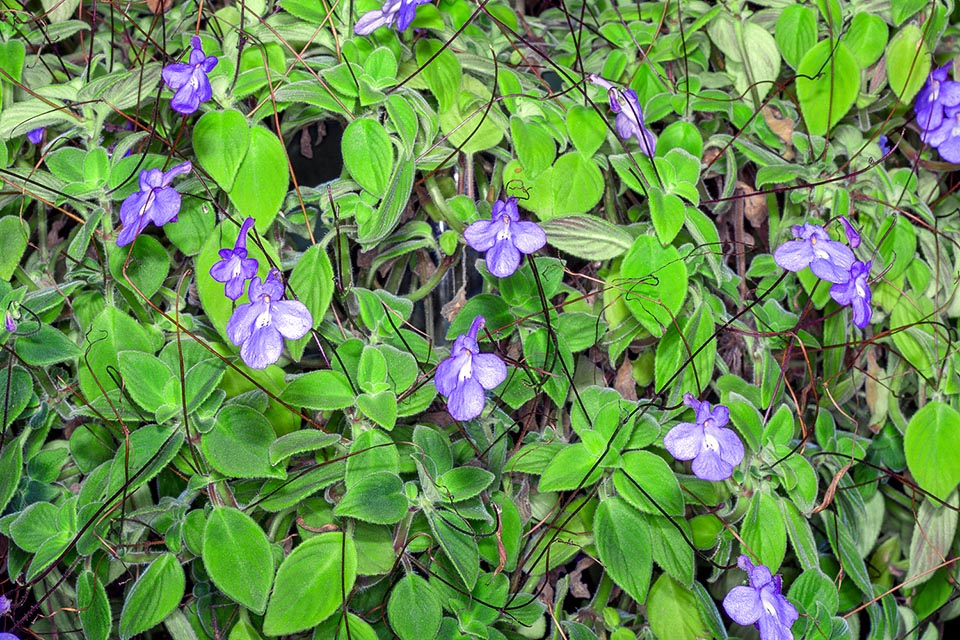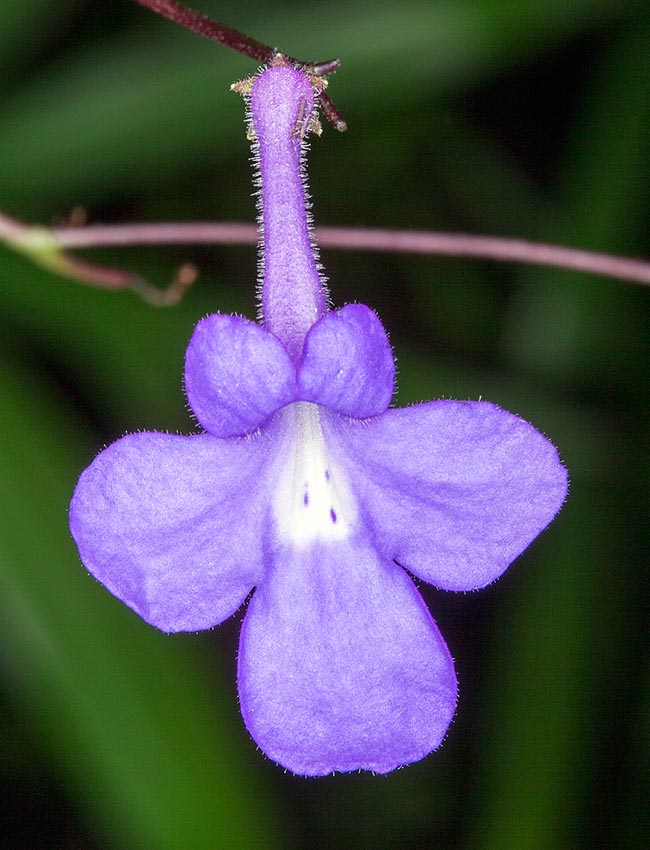Family : Gesneriaceae

Text © Pietro Puccio

English translation by Mario Beltramini

Native to East Africa, the Streptocarpus saxorum is a 20-30 cm evergreen suffruticose species. Cultivable also at home, has originated numerous hybrids © Giuseppe Mazza
The species is native to Kenya and Tanzania where it grows on the Usambara Mountains on rocky slopes, often in full sun, and in the rifts, between the 600 and the 1800 m of altitude above the sea level.
The name of the genus is the combination of the Greek adjective “στρεπτός” (streptόs) = kinked, twisted and of the substantive “καρπός” (karpόs) = fruit, with reference to the spirally twisted seed capsules; the name of the species is the plural genitive of the Latin substantive “saxum, i” = rock, cliff, stone with reference to the origin environment.
Common names: Cape primrose, false African violet (English).

Lasting and abundant blooming with violet mauve infundibuliform corollas with white throat © Giuseppe Mazza
The Streptocarpus saxorum Engl. (1894) is an evergreen suffruticose species, 20-30 cm tall, very ramified with hanging branches covered by a thick hair, 60-80 cm long, rooting at the nodes, distant from each other 2-4 cm.
The leaves, on a 3-6 mm long petiole, are simple, opposite, ovate to oblong-elliptic with obtuse apex, fleshy with marked veins, 1,8-3,2 cm long and 0,8-0,9 cm broad, of glossy dark green colour and covered by dense hair.
Inflorescences at the axil of the upper leaves, on an ascending peduncle of dark purple colour, 8-12 cm long, carrying one solitary hermaphrodite flower, about 3 cm long and 3,6 cm broad, of violet mauve colour with white throat. Calyx, 2-3 mm long, with 5 equal oblong lobes with obtuse apex, pubescent, infundibuliform bilabiate corolla pubescent externally, with trilobate lower lip, upper bilobiate much smaller, 4 stamens, 2 of which fertile, linear unilocular superior ovary and bilabiate stigma.
The fruit is a spirally twisted linear capsule, 5 cm long, containing a multitude of very fine seeds.
It reproduces by seed spread evenly on draining organic loam and covered by a thin layer of sand, in a very luminous position, but not in the direct sun, at the temperature of 24-28 °C.
The substratum is to be maintained constantly humid, but without stagnations, with nebulizations utilizing non calcareous water at environment temperature; the germination occurs in about one month and the first blooming starts from one year. It easily propagates also by apical cutting and by division.
Among the most ornamental of the genus, together with its hybrids and varieties, of easy cultivation, fast growth and abundant blooming that lasts for most of the year. Its cultivation as garden plant is limited to the humid tropical and subtropical zones, in sheltered position slightly shady, even if it stands the direct sun, on soils rich of humus, acidic, draining, aerated, maintained almost constantly humid, but without stagnations, being easily subject to rooting rottenness. Ideal for pots and suspended baskets or high containers, in way to let the stems to fall freely, for the decoration of open spaces, greenhouses and very luminous interiors, with good ventilation and winter lowest temperatures not under the 15 °C.
Regular watering during the vegetative period, allowing the upper layer of the loam to dry up before giving water again, spaced in winter, but without ever leaving it to dry up completely. It is easily subject to attacks of parasites, especially in little aerated locations, it is therefore to be controlled periodically in order to be able to intervene quickly with specific products.
→ To appreciate the biodiversity within the GESNERIACEAE family please click here.
